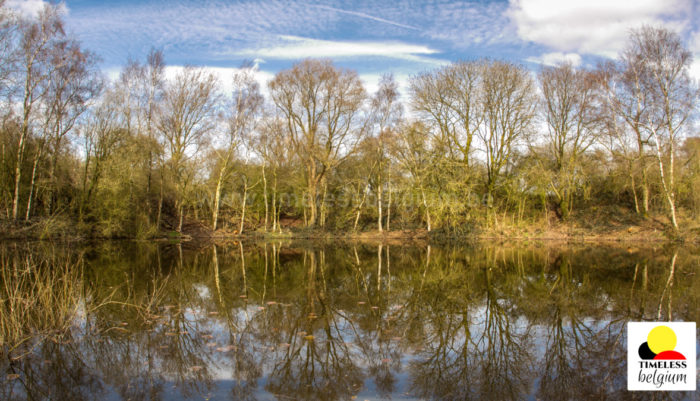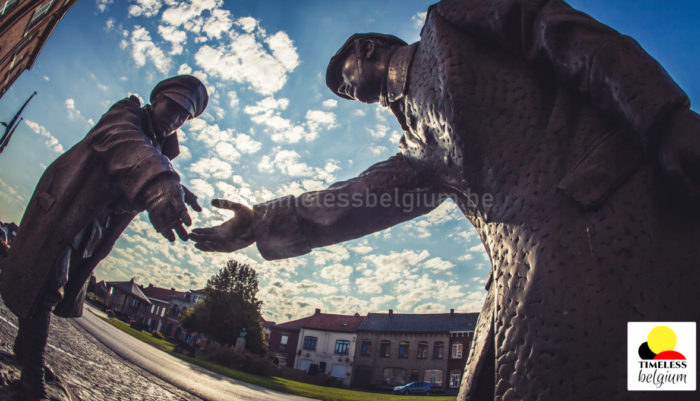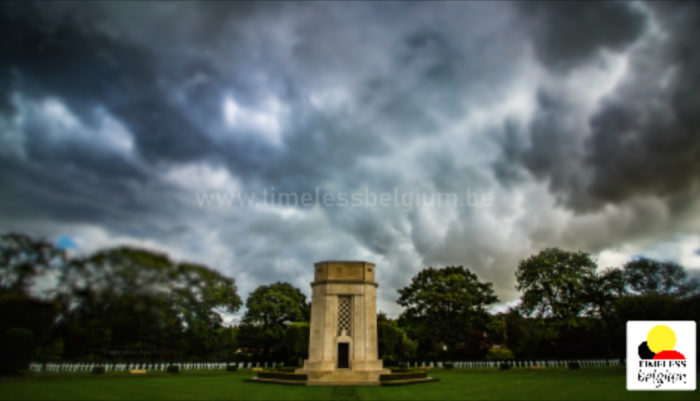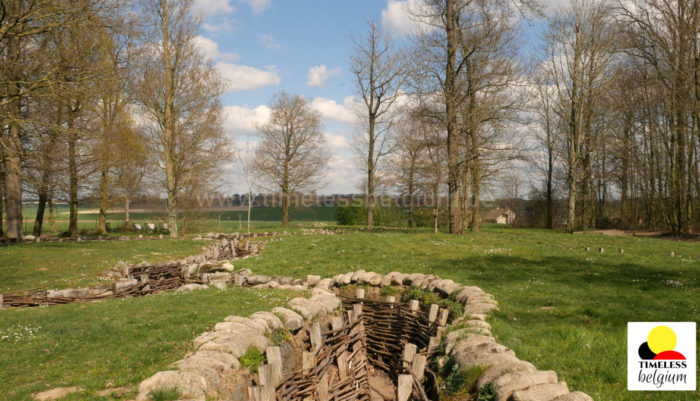English tunneler of WW1, reminder of 1917 battle of Messines; sculpture by Jan Dusaert in Wijschate village Heuvelland
(Browse the collection : West Flanders Province time lapse and video stock footage)
The Tunneller statue in the market square of Wijtschate village reminds us the mining operations preliminar to the battle of Messines Ridge during the First World War.
Carried out by General Sir Herbert Plumer this large scale attack was one of the most successful allied battles of the war on the Western Front.
In november 1914, the strategically important Wijtschate-Messines Ridge fell into german hands. The occupation of the high ground allowed Germans to observe the Allied and their rear areas in the Ypres Salient. The ridge was gradually transformed into a german stronghold with multiple defensive positions.
Early in 1916 the British began to tunnel beneath the german positions. In June 1917, British Empire forces attacked the ridge with the aim of capturing the high ground. At 3.10am on 7 June 1917, after a week-long artillery bombardment, allied forces detonated explosives in 19 mines under the german positions.
The effect of the mine explosions upon the German defenders was devastating. Some 10000 men were killed during the explosion alone. Most of the initial objectives were taken in the early hours of the day. German counter-attacks the following day failed to win back ground, but resistance continued until 14 June when allied forces had control of the Wijtschate-Messines Ridge.
Although the attacking forces were composed of men from different parts of the British Empire, the succeeding generations have associated the Battle of Messines particularly with the Irish and New Zealand participation. The battle was a prelude to the much larger Third Battle of Ypres in july 1917.
Source : CWCG
File names, codec and sizes | ||
tunnel01_fhd | tunnel01_uhd | tunnel01_web |
Mov ProRes 422 HQ | Mov ProRes 422 HQ | H264 Mp4 |
131 Mo | 560 Mo | 7,39 Mo |

 My Account
My Account 



